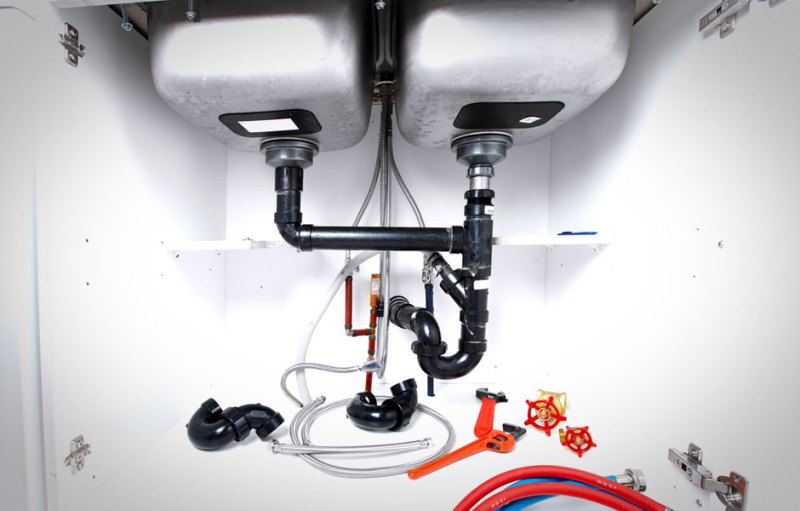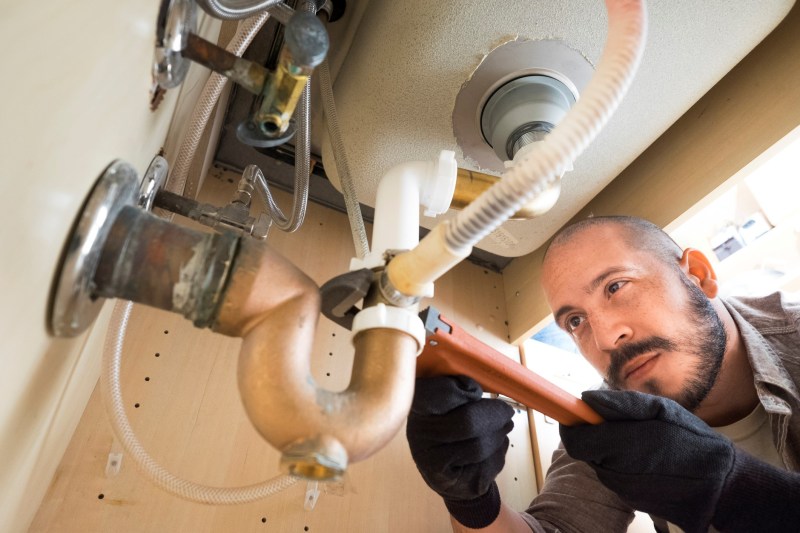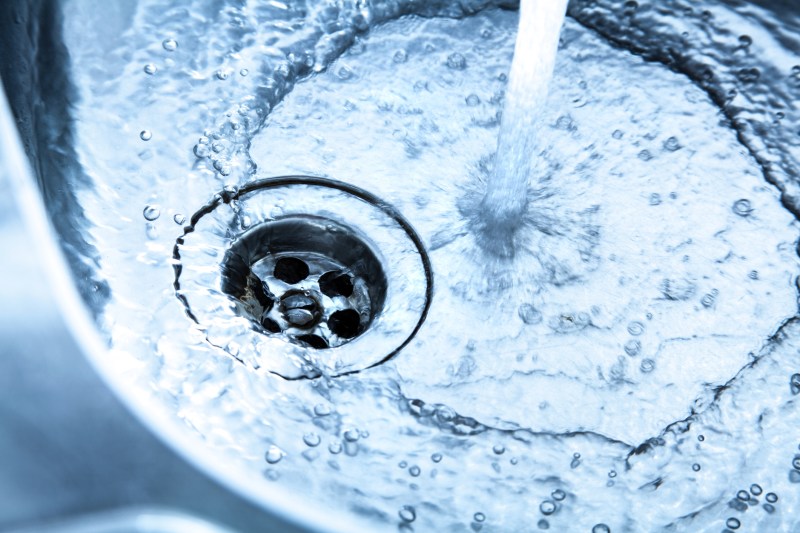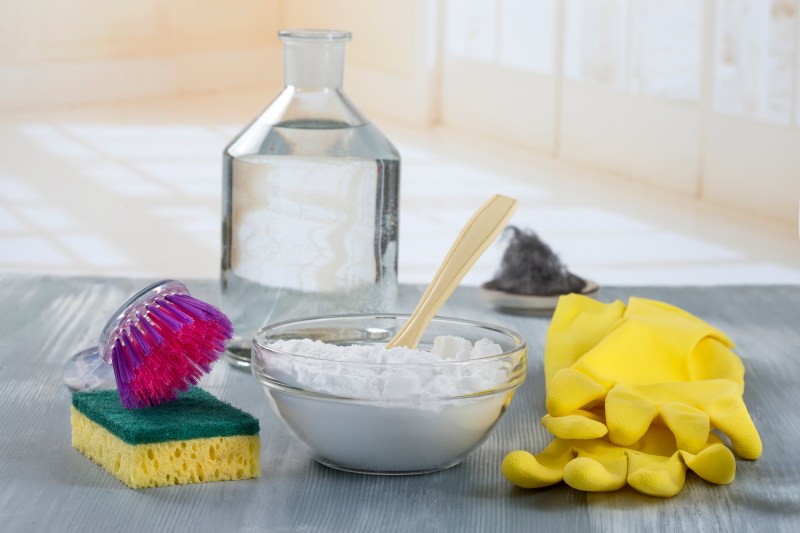
The best way to fix a clogged kitchen sink is not to let it get clogged in the first place. However, assuming it’s already too late, and the drain is no longer functioning well, the second-best way to handle a serious kitchen sink clog is to use the best multi-tools for any situation or the tools every man should have in his toolbox.
Now, there are many things that can clog a kitchen sink, but let’s just say, for example, that your beloved spouse has decided to prepare a new recipe that calls for an entire butternut squash and has thrown all the shavings, stringy insides, seeds, and discarded chopped bits down into the kitchen sink, hoping its rather aged disposal system can handle the heavy load.
This is all totally rhetorical, mind you, but imagine that an hour or so after this butternut squash is chopped and shredded and shaved and jammed down into the sink (unbeknownst to you), you run the water and happen to flip on the disposal, only to have a high-powered jet of wretched, filthy bilge water come blasting up out of the sink. (It may or may not spray all over the fresh produce perched nearby, FYI.) If you’re anything like the person in this hypothetical situation, the next thing you might do is grab a dome-shaped pot lid, hold it over the drain, and try running the disposal again a few times, hoping that the clog is right there, not in the pipes. But again and again, all you get is a blast of disgusting water.
How to fix a clogged kitchen sink – Step by step

Is it time to call the plumber? Hell no — it’s time to get to work! Let’s clear that clog! But the first step is put on clothing you’re prepared to get dirty (and potentially ruin).
Plunge it
A good ol’ plunger might be all you need to clear that clogged kitchen sink. Make sure you get a good seal (the sink should be wet, which it likely will be), get a good grip, and press down hard and straight repeatedly. If the water suddenly starts draining, you’re done! Hurray! Now, do it some more. Keep plunging for a while after you think you have beaten the clog.
Consider using some liquid drain opener, too, in order to really clear things — but know it can corrode some pipes, and of course, don’t get it on your skin (or in your eyes). It’s best to avoid plunging again for a long while after using such products.
Check the disposal
Disposals may seem like mighty contraptions, but they can easily jam if overloaded. A groaning or humming noise indicates just such a jam. But you can perform a manual override simply by using a wrench (an Allen wrench in many cases) to rotate the blades externally. You should see a bolt or a hole for an Allen wrench in the dead center of the bottom of the unit. A few good turns should have the blades loosened enough to take back over.
Clear the P-trap
See that little loop at the bottom of the pipes under your sink? That’s called a P-trap. Its main purpose is to stay filled with a bit of water so that fetid odors can’t waft up through the pipes and into your home. (Thanks, P-trap!) But of course, its curved design and the nature of gravity make it a great place for things (like butternut squash) to get stuck, causing a clog.
The P-trap in most sinks can be removed by hand simply by loosening the collars around its ends. Just be sure you have a pan or bucket underneath and towels on hand because things are almost surely about to get messy. Once you have the P-trap removed (use a pipe wrench if it’s stuck), then you should easily be able to tell if it’s filled up with gunk (or squash), and if it is, you should be able to clear it with a fork or some other basic tool.
Note: Before you reassemble the pipes, try running a bit of water again. If it streams out of the section above the removed P-trap, then indeed, that clog was the likely problem! But be ready for another backup once you reassemble the P-trap.
Take off the trap arm
As you might have deduced, the trap arm is the section of pipe just beyond the P-trap. It has a slight curve above the P-trap, which itself might hold a clog (say … of butternut squash), and it will give you access to another area where your pipes make a sharp turn as they head down behind the wall, soon to meet up with all the other water lines running away from your home.
If the trap arm itself is clear, try to look into the stub-out section of the drain, which is essentially the last thing you can see under the sink. If you spot a clog, try to pull it out rather than pushing it in. Coat hangers can help here.
Note: If any of the pipes you remove seem worn or damaged, now is a good time to replace them. It’s cheaper and easier to replace a pipe now than to mitigate flood damage later.
Snake it
You can rent a drain snake for half the cost of a plumber’s visit (hell, you can buy many of ’em for less than that), or you can get snake tubing that will work with most common drills. If you have taken the time to rent or buy a snake, then follow the accompanying instructions. If you are going the cheap bastard route, you can consider using a straightened coat hanger as a sort of snakelike thing, and you can jam it into the stub-out and spin it in circles — likely in vain.
Check the cleanout
Most houses have a cleanout drain just outside the kitchen located approximately underneath the sink. If you unscrew it, you might be able to spot a clog, or you might be able to use your snake to grab a clog somewhere between the drain and the under-sink piping. Or the clog might be farther down beyond the cleanout, in which case we’re getting into “Good luck, mister” territory.
How to avoid future clogging

Just follow a few basic pointers and you should be just fine! The long and short of is to remember that the disposal is for catching the food that happens to get through, not for shoving food down with unchecked prejudice.
- Never put butternut squash (or similar sticky, slimy foods) down the drain.
- Use a drain screen to catch as many scraps as possible.
- If coffee grinds or flour go down the drain, run warm water for at least 30 seconds.
- Run your disposal until it sounds like it’s turning freely each time.
- Never, EVER, put butternut squash down the drain.
- Pour a large pitcher of boiling water mixed with a cup of vinegar down the drain weekly.
Natural ways to unclog a kitchen sink

Believe it or not, natural could be the way to go, depending on how badly your sink is clogged. Here are a couple of natural remedies.
Baking soda and vinegar
This classic combination is a natural fizzing wonder! Pour a cup of baking soda down the drain followed by a cup of white vinegar. The mixture will fizz and bubble as it reacts, potentially breaking down the clog. Wait for 15 minutes to allow the magic to happen, and then flush with hot water.
Baking soda and salt
If you don’t have vinegar on hand, this can be a substitute. Combine 1/2 cup of baking soda and 1/2 cup salt in a bowl. Pour the mixture down the drain and let it sit for 15 minutes. Follow with boiling water to flush everything out.



